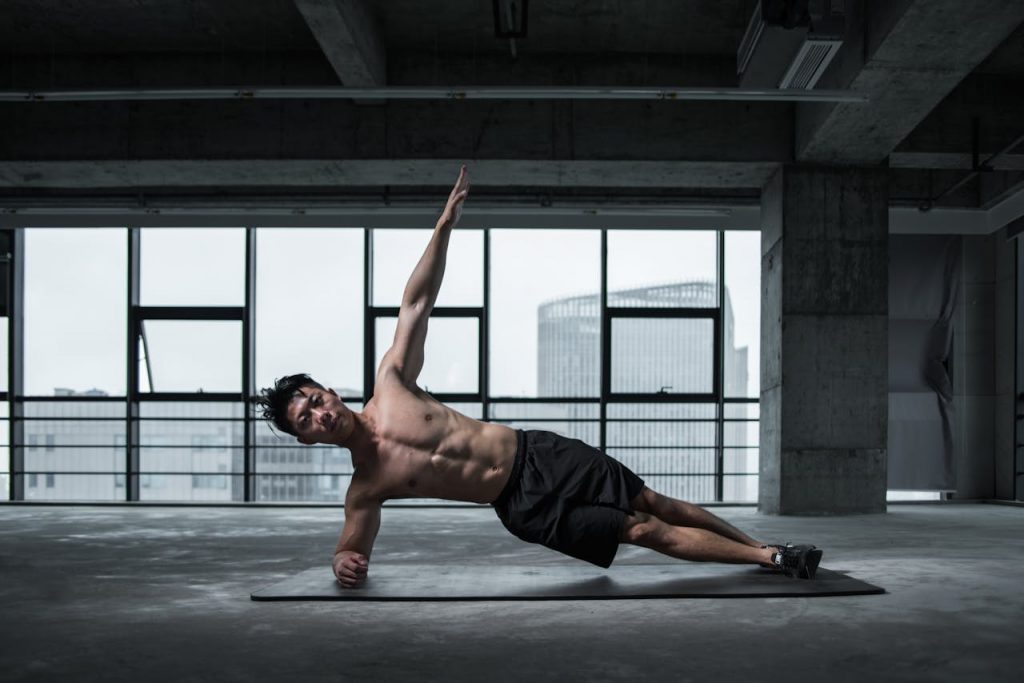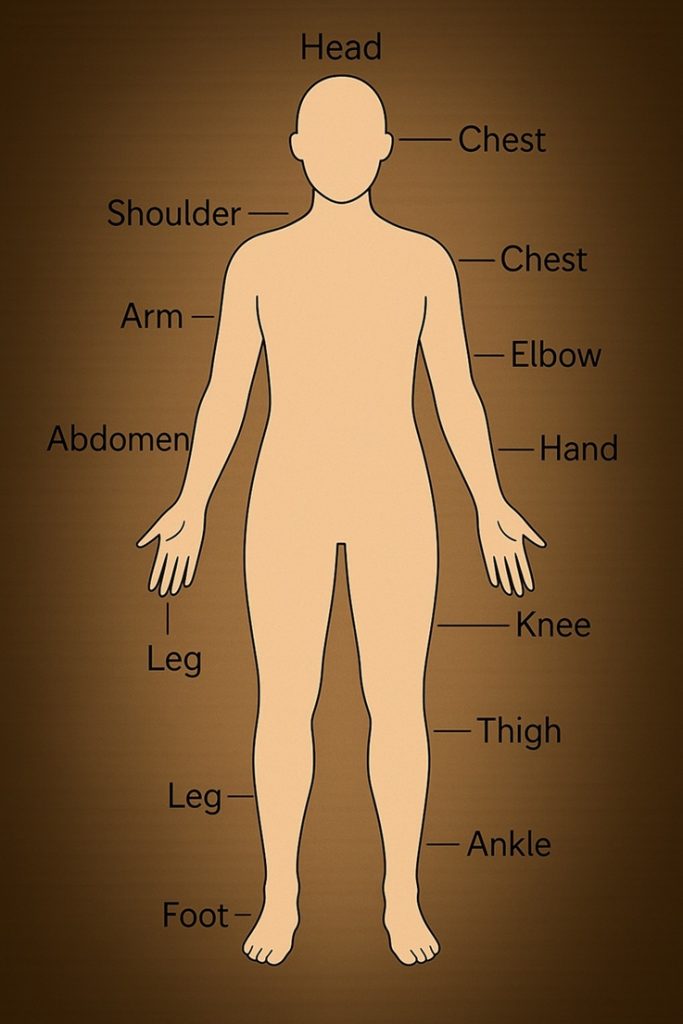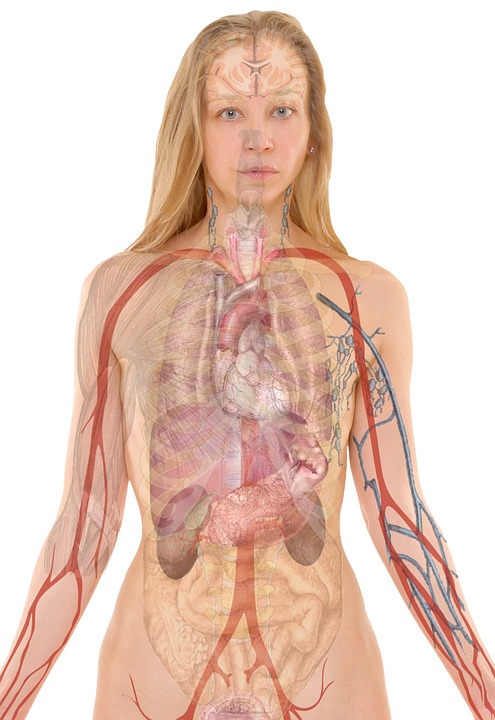 Vocabulary for The Body
Vocabulary for The Body
Learning the names of body parts is essential when describing people and health issues. This guide will introduce basic vocabulary for external body parts, limbs, internal organs, bones (skeleton) and muscles.
We’ve also added a section with example phrases for describing people’s appearance and tips for learning body vocabulary and teaching terms for the human body.
Did you know the human body has 206 bones, over 600 muscles and five major sense organs: eyes, ears, nose, tongue and skin?
Main External Body Parts
These are the parts of the body we can see and touch.
- Head – includes the face, eyes, ears, nose, mouth, hair, forehead, chin, cheeks, eyebrows, eyelashes, teeth, and tongue.

- Neck
- Shoulders
- Chest
- Back
- Stomach (or tummy – informal)
- Waist
- Hips
- Buttocks (or bottom, backside, bum – informal)
- Legs – includes thigh, knee, shin, calf, and ankle
- Feet – includes heel, toe, sole, arch
- Arms – includes upper arm, elbow, forearm, wrist, and hand
- Hands – includes fingers, thumb, knuckles, palm, nails
Limbs
The body has four main limbs — two arms and two legs. These allow us to move, hold things and interact with our surroundings. The limbs are used for movement, work and interaction with the world.
Arms (Upper Limbs)
Each arm has several important parts:
- Shoulder – connects the arm to the body.
- Upper arm – area between the shoulder and elbow.
- Elbow – the joint that lets the arm bend.
- Forearm – between the elbow and wrist.
- Wrist – the joint that connects the hand to the arm.
- Hand – includes:
- Palm – the inside part of the hand.
- Back of the hand
- Fingers – usually five: thumb, index, middle, ring and little finger.
- Knuckles – joints in the fingers.
- Nails – found at the tips of fingers.
Legs (Lower Limbs)
Each leg also has several key parts:
- Hip – where the leg joins the body.
- Thigh – top part of the leg, from hip to knee.
- Knee – the joint that lets the leg bend.
- Shin – front part of the lower leg.
- Calf – back of the lower leg.
- Ankle – the joint between the leg and the foot.
- Foot – includes:
- Heel – back part of the foot.
- Sole – bottom part of the foot.
- Arch – curved part underneath.
- Toes – usually five per foot, including the big toe and little toe.
- Toenails – at the tips of the toes.
- Fingers and toes are sometimes called your ‘extremities’
Internal Organs
These organs are inside the body and are responsible for essential functions:
- Brain – controls thinking, movement, memory.
- Heart – pumps blood around the body.
- Lungs – used for breathing.
- Liver – helps clean the blood and store energy.
- Kidneys – remove waste from the blood.
- Stomach – digests food.
- Intestines – absorbs nutrients and removes waste.
- Bladder – stores urine.
- Pancreas – helps with digestion and blood sugar control.Bowel – processes waste.
Cardiovascular system (blood circulation), circulatory system, circulation
Anatomy, physiology, muscular system, cardiac muscles (heart)
Pulmonary system (relating to the lungs)
 Skeleton / Bones
Skeleton / Bones
The skeleton gives structure and protection to the body.
- Skull – protects the brain.
- Spine or backbone – supports the body and protects the spinal cord.
- Ribs – protect the heart and lungs.
- Pelvis – supports the lower organs and connects to the legs.
- Arm bones – humerus, radius, ulna.
- Leg bones – femur, tibia, fibula.
- Joints – where bones meet (e.g knee, elbow, shoulder).
Muscles
Muscles help the body move. Some well-known muscles include:
- Biceps – upper arm
- Triceps – back of the upper arm
- Abdominals (abs) – stomach muscles
- Pectorals (pecs) – chest muscles
- Gluteals (glutes) – buttock muscles
- Quadriceps (quads) – front of the thigh
- Hamstrings – back of the thigh
- Calf muscles – lower leg
- Deltoids – shoulder muscles
- Intercostal muscles – muscles between the ribs
Describing Body Shape, Size & Appearance
These are common adjectives and phrases used to describe the body or a person’s appearance:
Height
- Tall – above average height
- Short – below average height
- Medium height – neither tall nor short
Build / Size
- Thin / Slim – having little body fat
- Skinny – very thin (sometimes negative)
- Average build – not thin, not fat
- Muscular – having visible muscles
- Strong – physically powerful
- Fat / Overweight – having extra body fat (fat can be impolite)
- Chubby / Plump – a little overweight (milder terms)
- Well-built – broad and strong body, often for men
- Petite – small and slim, often for women
Hair & Head
- Bald – no hair on the head
- Shaved head – hair cut very short or removed
- Long hair / Short hair
- Curly / Straight / Wavy hair
- Blonde / Brown / Black / Red hair
Other Features
- Tanned / Dark / Medium / Pale / Fair – skin tone
- Freckles – small brown spots on the skin
- Beard / Mustache – facial hair
- Wrinkled – lines in the skin, often from age
Posture & Movement
- Straight posture – standing tall
- Stooped / Hunched – bent forward
- Limping – walking with difficulty
- Graceful – moving smoothly
Useful Phrases & Tips
My back hurts.
I broke my arm.
She is short-sighted.
Face and Hair
He has brown eyes and short hair.
She has long, wavy hair and green eyes.
He’s completely bald now.
He wears a cap to cover his shaved head.
Her eyebrows are thick.
She has a friendly smile.
She has a round face with soft cheeks.
He has a sharp chin and a square jawline.
His nose is quite big, but it suits his face.
She smiled and showed her white teeth.
He wears glasses because his eyesight is poor.
She has a scar on her forehead.
Height and Build
He is tall with broad shoulders.
She’s quite short, but very strong.
My uncle is medium height and skinny.
He’s a little chubby.
She’s very slim.
He has a big belly from eating too much fast food!
Arms and Legs
He has strong arms with well-defined biceps.
She has long, shiny fingernails.
He has broad shoulders.
Her legs are strong from running every day.
He has tattoos on both arms.
Posture
He walks with a slight limp.
She stands with good posture.
He’s always hunched over his laptop.
She moves gracefully, like a ballet dancer.
Describing body organs
- The heart pumps blood
- The blood carries oxygen around the body.
- Your heart beats faster when you exercise.
- Your brain needs rest to function well.
- The brain controls everything we do, including thinking and movement.
- The lungs help us breathe in oxygen and breathe out carbon dioxide.
- Smoking can damage your lungs.
- The stomach breaks down food after you eat.
- If you eat too quickly, your stomach can hurt.
- The stomach uses acid to digest food.
- Alcohol can damage the liver.
- The liver is one of the largest organs in the body.
- You need healthy kidneys to remove toxins from your body.
- The kidneys are located near your lower back.
- The small intestine absorbs nutrients from food.
Learning and Teaching Body Vocabulary
It’s useful to practise using body vocabulary with pictures or diagrams. Use the words in real situations (e.g. describing someone or going to the doctor) and learn both formal (e.g. abdomen) and informal words (e.g. tummy).
To practise the vocabulary, try pointing to different parts of your body and saying the word out loud. You can also label a diagram or try a quiz using flashcards.
Here are some more useful tips for learning and teaching vocabulary for the human body:
Tips for Learning Body Vocabulary
Break It Down: Start with major body parts and then move to more specific areas. For example, learn basic words like “head,” “arms” and “legs” first, and then move on to “shoulders,” “wrists,” “ankles,” etc.
Use Visuals: Associate words with pictures or diagrams of the body. This can be helpful for remembering body parts and their functions.
Label Real-Life Examples: Label body parts on yourself or a model (e.g. in a mirror, or using a diagram). Repeating the words as you touch or point to the parts helps reinforce learning.
Create Mnemonics: Come up with memory aids or stories that link the word to something familiar. For example, “scapula” might be remembered as “shoulder blade” because it sounds like “sculpture,” which could remind you of the shape of the blade.
Flashcards: Use flashcards with pictures on one side and the name of the body part on the other. Apps like Anki or Quizlet can be useful for repetition.
Use It in Context: Learn how the body parts are used in daily life. For example, “My feet are tired” or “I broke my wrist.” This makes the vocabulary practical.
Practise with a Partner: Practise with someone else by pointing to different body parts and saying their names out loud.
Tips for Teaching Body Vocabulary
Use Total Physical Response (TPR): Get students to act out or touch the parts of the body while saying the words. This method makes learning interactive and helps with retention.
Interactive Games: Play games like “Simon Says” (e.g. “Simon says touch your toes”) or body part bingo to keep learners engaged while reinforcing vocabulary.
Real-Life Demonstrations: As a teacher, use yourself as a model to point to and name body parts. This provides a practical and relatable example.
Use Repetition: Frequently repeat the body parts in different contexts (e.g. “Point to your knees”). This helps learners solidify their knowledge.
Storytelling: Create short stories or scenarios that involve the use of body parts. For example “Tom fell over while playing soccer. Now his knee hurts”
Introduce Movement: Involve students in physical activities that require them to use their bodies, like stretching or simple yoga poses, while naming the body parts involved.
Introduce Body Idioms: Once learners are comfortable with the basic terms, introduce expressions related to the body (e.g. “I’m keeping an eye on you” and “I’m all ears”) to expand their vocabulary in context.
Use Songs and Rhymes: There are many children’s songs and rhymes that teach body parts, which can be fun and engaging for learners of all ages. For example, “Head, Shoulders, Knees and Toes.”
Mastering body parts vocabulary helps students gain a better understanding of both language and the human body. By engaging with these terms in real-world contexts improves communication and enables students to describe the way we move and interact with the world around us.
Share your thoughts
- Students, can you describe your daily routine using five body-related words?
- Can you think of any idioms or expressions that use body vocabulary (e.g., “costs an arm and a leg”)?
- How does knowing body vocabulary help in real-life communication?
- What are some culturally sensitive considerations when teaching body vocabulary?
- Teachers. which of these activities could you adapt for different age groups or language levels?
- How could you integrate body vocab into a wider topic, like health, fitness, or routines?



